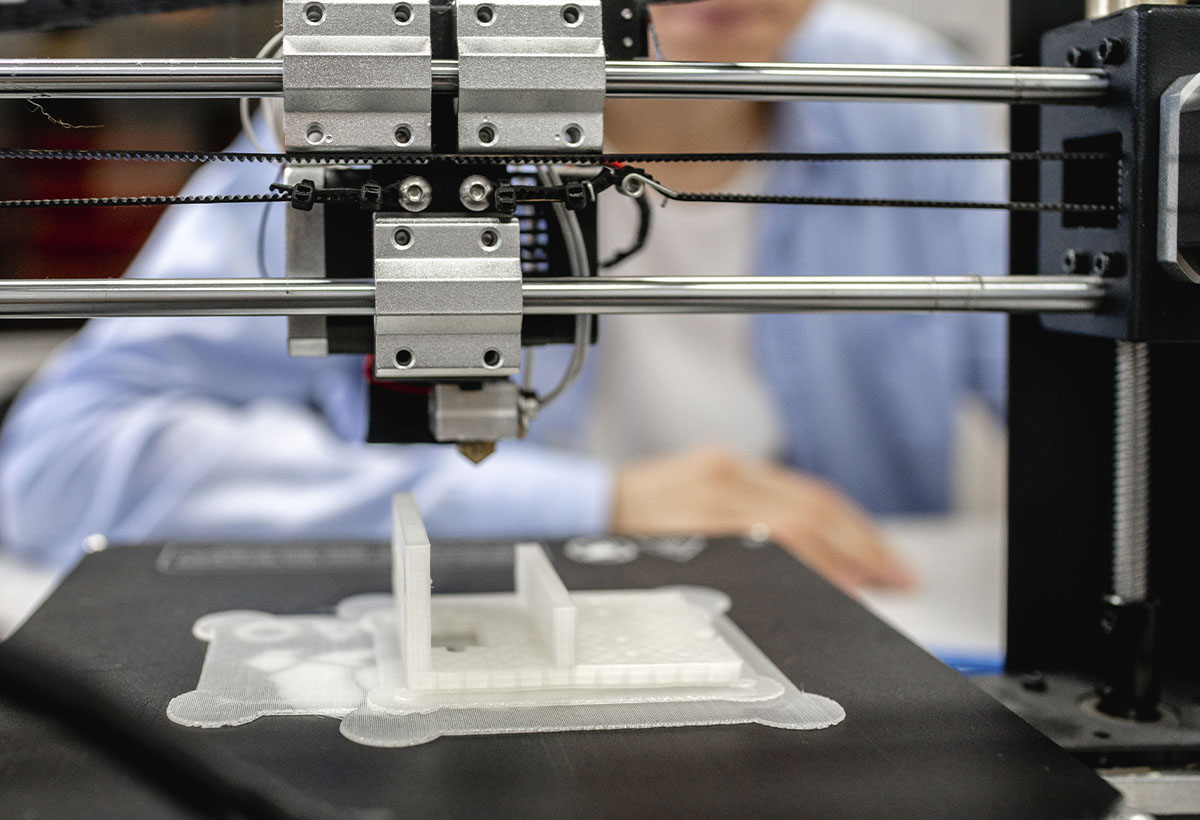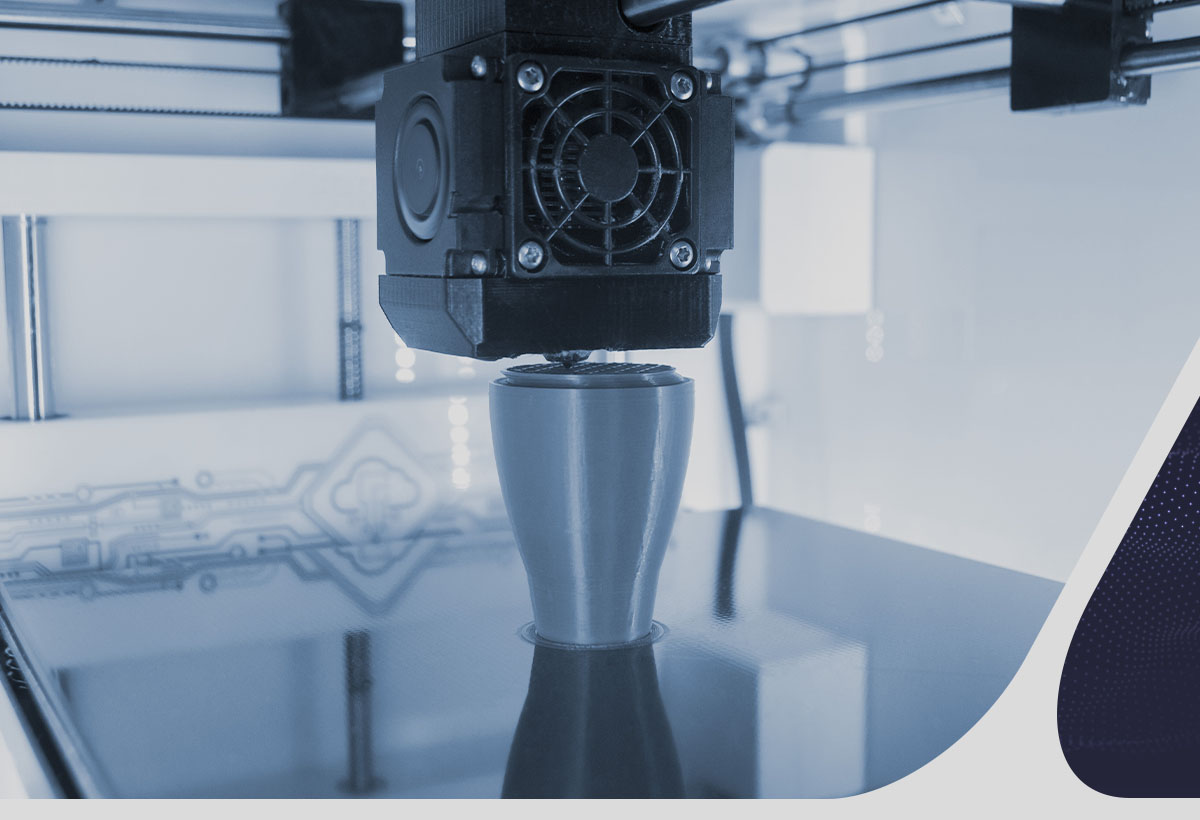Additive manufacturing is directly connected to industry 4.0. But how does this production model optimize the Fourth Revolution? Read the text to find out!
In other words, it collaborates with the integration of automation, data and connectivity of production processes.
To understand a little more about this relationship, continue reading. In this text, we have gathered everything you need about additive manufacturing.
Let’s go?
What is additive manufacturing?
Additive manufacturing is a production process that is based on adding successive layers of material, resulting in the creation of a final part.
To do this, a 3D geometric representation of the model is developed, using a CAD (computer-aided design) system.
According to one article, this additive process makes it possible to manufacture physical components using a variety of different materials, shapes and principles.
However, the raw material is usually polymer filaments (plastic) or metals.
Although it is associated with 3D printing, the two terms are not synonymous.. Ou seja, a impressão 3D é apenas uma das ferramentas que seguem os princípios da manufatura aditiva.
As it is a fully automated construction process, it promotes faster production compared to other manufacturing methods.
Furthermore, it guarantees advantages such as:
- Geometric freedom: allows you to create complex parts and integrate functions into a single project;
- Sustainability: reduces the need for multiple components, material waste and promotes efficient use of energy;
- Reduces the need for tools: there is a continuous process without the need to change tools or fastening devices;
- Rapid production: speeds up the creation of prototypes and final parts at a lower cost for small batches;
- Versatility of materials: allows the mixing of materials or the variation of their properties throughout the piece.
Furthermore, it is important to highlight the role of additive manufacturing in personalization.
According to Revista Poliedro, this mechanized process allows for greater customization, both in mass production and in small batches, offering flexibility to meet diverse consumer demands. In the textile industry, for example, it provides agility in manufacturing
of clothes and materials, through 3.D molding. This helps eliminate waste by ensuring high performance and assertiveness of production.
How to apply in the textile industry?

As in other sectors, additive manufacturing in the textile industry follows a few steps. According to the article already mentioned, they are:
- 3D modeling: creation of a 3D geometric model of the part (in CAD systems);
- Conversion to suitable format: transformation of the 3D model into a specific format for additive manufacturing (such as STL or AMF);
- Process planning: definition of slicing, support structures and material deposition strategies;
- Part manufacturing: printing execution on additive manufacturing equipment;
- Post-processing: cleaning and finishing, which may include traditional machining processes.
But, to execute them, you need to understand their technologies and respective principles. According to ISO/ASTM 52900:2015, cited in the article, they are divided into 7 categories. Veja a seguir!
1. Photopolymerization in a vat
Here, a photosensitive liquid polymer is selectively cured in a vat via UV light-activated polymerization.
The process also concerns those with materials that are not necessarily in a vat.
The main technologies here are:
- Stereolithography (stereolithography – SL);
- Continuous liquid interface production (CLIP);
- InvisionTEC, among others.
2. Material extrusion
In this principle of Additive Manufacturing, the material is extruded through a nozzle or orifice, being selectively deposited.
For this, the following are used:
- Fusion and deposition modeling (FDM);
- MakerBot;
- RepRap;
- Fab@Home, and others.
Read also: 5 benefits of Big Data for the industry
3. Material blasting
To blast the material, it selectively receives small drops.
This technique can be applied through:
- PolyJet;
- Multijet printing (MJP);
- Solidscape technology, and more.
4. Binder blasting
In this case, a liquid binding agent It is deposited to bind powdered materials. The principle is the same as the previous one, just changing the applied component.
The technologies for this process are:
- Color jet printing (ColorJet Printing – CJP);
- VoxelJet;
- ExOne, etc.
5. Powder bed fusion
In this, Additive Manufacturing is carried out through the fusion of thermal energy in selected regions of a powder bed.
Are applied:
- Selective laser sintering (SLS);
- Direct metal laser sintering (DMLS);
- Selective laser melting (SLM);
- LaserCUSING;
- Electron beam melting (EBM), and more.
6. Adding Blades
This process refers to the joining (gluing) of cut sheets of material to form a specific object.
To do this, you must use:
- Laminated object manufacturing – LOM;
- Solido Technology;
- Selective deposition lamination – SDL, and others.
7. Directed energy deposition
Finally, the technique allows the fusion of materials, using thermal energy, as they are deposited.
For this process, you need to use:
- Final shape obtained with laser (laser engineered net shaping – LENS);
- Direct metal deposition – DMD;
- Three-dimensional laser cladding (3D laser cladding), and more.
Additive manufacturing and industry 4.0: what is the relationship?

As you can already see, additive manufacturing is directly linked to industry 4.0. There is no way to talk about one without addressing the other. In fact, additive manufacturing is one of the technologies that help to apply more standardized, automated and intelligent operations, premises of the Fourth Industrial Revolution. Both focus on innovation and digitalization of industrial processes
. Elas se conectam por vários pontos, mas os principais são:
- Digitalization and connectivity: to create 3D models, additive manufacturing relies on digital data, which can be integrated with management and monitoring systems, promoting real-time adjustments;
- Automation and Artificial Intelligence (AI): with the help of AI and automation, characteristics of industry 4.0, additive manufacturing now has the optimization of printing stages and resources;
- Agility and flexibility in production: It is possible to adjust and create prototypes quickly, without the need for tools or major changes to the process. This creates flexibility to respond to market changes.
These are exactly the factors that contribute to the optimization of industry 4.0. A manufatura aditiva é peça-chave na transformação das indústrias rumo ao conceito, impulsionando a inovação e a competitividade.
In other words, if worked together with other 4.0 technologies, additive manufacturing helps to increase productivity and support more assertive decision-making. The dynamic environment of Industry 4.0 demands efficiency and the reduction of costs and waste.
And this is possible with the help of this production model, which optimizes processes, shortens deadlines and enables the creation of complex designs.
Read also: Textile Industry 4.0: controlling quality in the era of advanced manufacturing
Bet on innovation!
In conclusion, additive manufacturing offers significant competitive advantages for the textile industry that seeks to stand out among the more than 24,300 formal production units in the country, according to Abit. To achieve this, it is essential to invest in textile machines that are aligned with the principles of Industry 4.0, offering essential features such as digitalization, automation and connectivity.
This equipment enables the integration of data and processes, ensuring greater productivity and competitiveness in the textile sector. So, download the complete Delta catalog now to discover the smart equipment that will help you put these concepts into practice.




